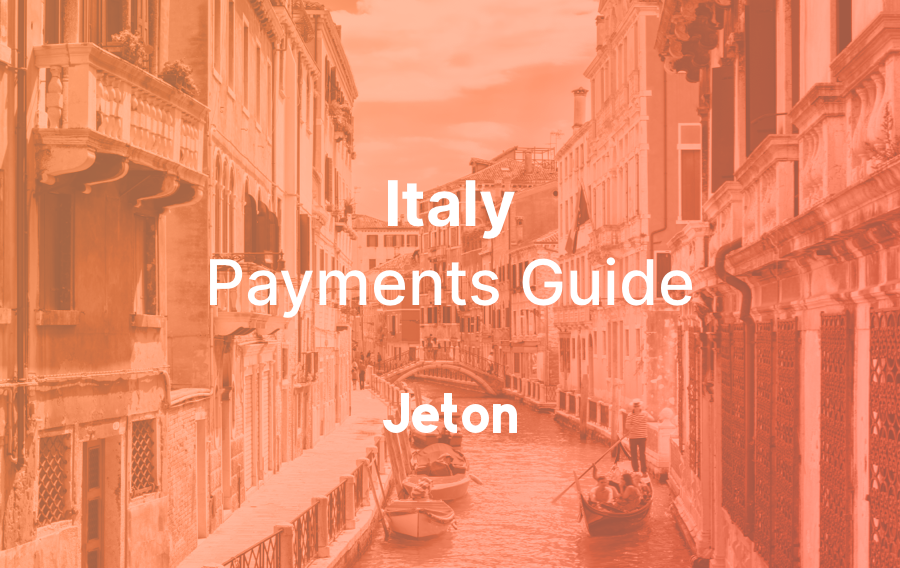La Bella Italia!
Spaghetti Bolognese, David of Michelangelo, Vatican, gondolas, Pompeii, Chianti wine, and Fontana di Trevi. Yes! Today, a spectacular country with warm people and delicious dishes is in our limelight. In this article, we will introduce the most curious facts about this country and payment methods in Italy to our readers. What is so special about it?
“Life is a combination of magic and pasta”, says Federico Fellini, legendary Italian film director and screenwriter.
Signore Fellini is probably right! What is left in life without joy and magic? We rush all the time, but we do not know how time flies. So what is the point of running? Here we come to the ultimate Italian philosophy of Carpe Diem: Vivi alla giornata! There is no nation which seizes the moment and enjoys every breath more than Italians.
Italy is located on a peninsula in Southern Europe, surrounded by the Mediterranean sea, and it is also considered a part of Western Europe. Rome is its capital and the third most populous city within European borders. Attracting tourists from all over the world no matter what season, Italy holds the title of the fifth most visited country, with over 60 million international visitors annually.
Did you know that tourists throw more than €3,000 into the Trevi Fountain every day because it is a tradition to make a wish and throw a coin into the fountain once you have the chance to see it? We guess many people have so many things to wish for. We cannot blame them, can we?
Actually, there is something for every taste in Italy. Are you interested in history? Pompeii, Vatican, Colosseum, Capitoline Museum, Uffizi Gallery, Venice, Leaning Tower of Pisa, and many more await you. More into trekking? Italy offers Cinque Terre, Lake Como, Amalfi Coast, and Mount Etna. Do you like architecture? In Italy, every corner is aesthetically pleasing, and the entire country is filled with magnificent buildings, especially Florence and the Italian Riviera.
While Italy is one of the youngest countries in Europe, its history goes far back. Rome is, in fact, over 2000 years old, and it was founded in 753 BC under the Roman Empire. Another surprising aspect of Italy’s history is that Italy was a dictatorship until 1945. After WWII, the country voted to become a republic, which made the reign of King Umberto II only 26 days, from 9 May to 12 June 1946.
It would be a loss not to mention the Renaissance when the subject is Italy. This was a game-changer period mainly defined as the “rebirth” of Europe in terms of art, classical philosophy, literature, science, politics, and architecture. Awakening in many aspects started in Italy and broadened to all of Europe and overseas.
The most precious masterpieces of the world we admire today were created in the Renaissance period. Vitruvian Man and The Last Supper of Leonardo da Vinci, The Birth of Venus and Primavera of Botticelli, The Creation of Adam, David, and The Pietà of Michelangelo, Duomo Santa Maria del Fiore in Florence!
Italians are pretty sensitive about the quality of their food and drinks. If you want to tease an Italian, probably the best way is to eat spaghetti with ketchup or add some cooking cream to the Spaghetti Alla Carbonara. Italian cuisine is famous all over the world, and some of its dishes have become a staple in many households, such as pasta and pizza.
The traditional pasta recipes of Italy go as far back as the 4th century B.C. And the worldwide famous pizza, with the modern version we all know, was invented in Naples in 1860. Italians like to cook with fresh ingredients, and the country is highly abundant, with various kinds of produce growing in almost every region. In fact, Italy is the world’s largest wine producer. Their cheese, wine and olive oil are also known worldwide. Once you taste them, you know you are in Italy for real.
Another drink that is highly important to Italians is, without a doubt, coffee. Italians consume 14 billion espressos each year, and they can drink it any time of the day, multiple times a day. Italy has no fancy coffee mocktails like white frappuccino and iced caramel latte. Italians value their traditional ways and do not tolerate anything other than the original. This might be why Starbucks never became a hit in Italy, like in most of the world. Currently, there are only 11 Starbucks stores all over the country, and tourists love visiting the locations to get their usual ice coffees.
Italy’s economy is the third-largest national economy in the European Union and also the world’s 9th-largest regarding GDP. The country is a founding member of the European Union, the Eurozone, the G7 and the G20. Being a significant part of many reputable organisations, the biggest trading and export partners are Germany, France, the United States, Spain, the United Kingdom, and Switzerland.
The Economist’s statistics show that the nation has the 8th highest quality of life. Thinking about how Italian life is based on relaxation, taste, joy, and traditions, this result does not surprise any of us. The La Dolce Vita lifestyle is attractive and reminds us how we must age rather than rush from one point to another in our daily routine. Surely, Italians know how to live well!
Choosing Payment Methods in Italy
Preferred payment methods and practices in Italy are not surprising, considering how traditional Italian people are and the banking regulations in the European Union. Continue reading to learn in detail about the payment options in Italy and find the one best for you.
What are the Different Types of Payment Methods in Italy?
- Cash in Italy
The nation is highly traditional and conservative regarding most things and payment options. Cash is still prevalent all over Italy. Around 84% of all payments are done with cash. On the counter, money is used chiefly for small in-store amounts. Just like other European Union countries, the currency of Italy is Euro.
You can exchange your local currency for Euros from exchange points in big cities, busy streets and shopping malls. It is also possible to withdraw Euros from the ATMs you can find in almost every corner of Italy. It is a joy to pay for the incredible Italian espresso you drink at the small, local coffee shop and spend it with cash. The traditional way is the way to go for a genuine Italian experience.
- Credit Cards in Italy
Credit cards are also a significant preference for Italians. Credit and debit cards are mostly preferred for online shopping. They make up 33.8% of all online payments. Major credit and debit cards, such as MasterCard, Visa, Maestro/Bancomatand American Express, are widely used in Italy. Almost every store accepts cards as a form of payment while keeping cash on you might be a good idea for small fees in local shops, cafes and restaurants.
- Digital Wallets in Italy
Italians value efficiency and practicality a lot. That is why digital wallet usage in Italy is relatively high, taking up to around 32.3% of all e-commerce payments in the country. Digital wallets are one of Italians’ most used and best payment methods online.
Since digital wallets are an ideal option for making your online payments safely and effortlessly, it is not surprising why Italians are looking for trustworthy digital wallet options like Jeton Wallet. Every digital wallet provides different benefits, and it is up to you to decide which one is best for you.
- Cryptocurrency in Italy
Cryptocurrencies are totally legal in Italy. This means you can safely buy, sell and trade crypto coins easily. Many crypto exchange platforms are available to use in Italy, and you can even find Bitcoin ATMs in big Italian cities such as Milan. While it is not illegal to buy, trade and sell cryptocurrencies in Italy, it is not considered legal tender. That is why the government and businesses are not legally allowed to accept crypto coins as payment.
Jeton Wallet in Italy!
Ciao Italia! La vita è bella come sempre!
We have created an exquisite digital wallet, Jeton Wallet, providing a smooth and trustworthy online payment experience for all European countries for those looking for an affordable way to send/receive money transfers overseas.
According to our long experience in Italy, we know it is pretty tricky to open a traditional bank account without a residence permit. Expats, digital nomads, or entrepreneurs may have a hard time getting one. However, creating a Jeton Wallet account takes only a few minutes and clicks. Moreover, every Jeton user gets a EUR IBAN momentarily to operate your transaction.
Jeton Card is a Visa-based debit card sent to your residential address a couple of days after registration. You can utilise this card efficiently both in-store and online shopping. All the transactions will be stored in the Jeton App. Thus, you do not have to worry about suspicious activities you do not remember. All is recorded detailedly in your mobile application. Visit jeton.com to meet our avant-garde payment services to level up your entire online experience! Together we are stronger than ever!



